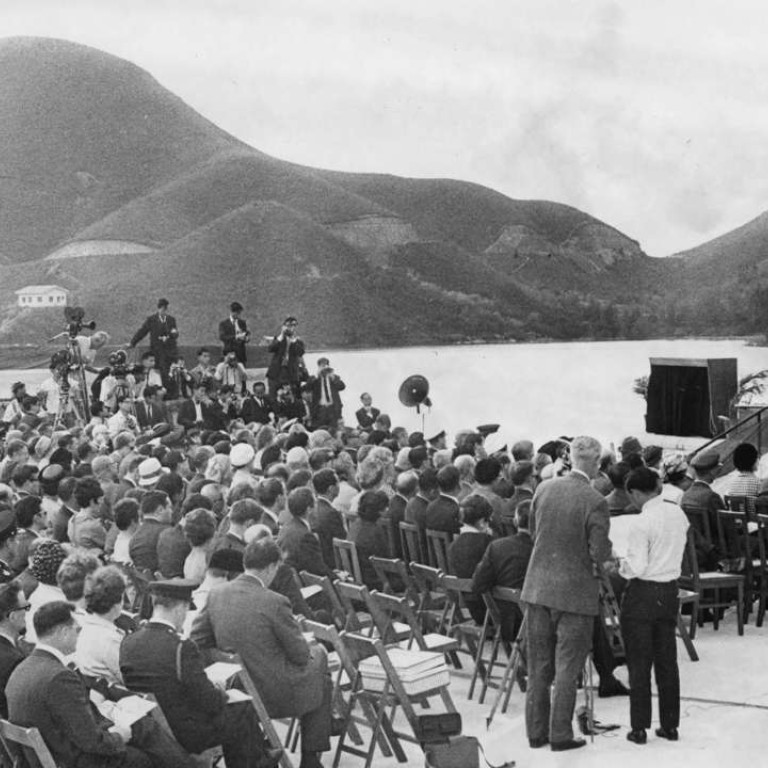
How Hong Kong built Plover Cove Reservoir, a world first
Designed to fix the territory’s dire water shortage, the scheme to turn a sea inlet into a reservoir was described by the SCMP as one of the world’s major engineering feats
“Government engineers are investigating the possibility of turning Plover Cove, a large inlet in Tolo Harbour […] into a reservoir for fresh water storage,” the South China Morning Post reported on July 25, 1958.
It was the newspaper’s first mention of a project that would “triple the storage capacity of the colony’s reservoirs”; an ingenious scheme, the first of its kind in the world, designed to address Hong Kong’s perennial water-shortage problems.
“Plover Cove is enclosed by a land mass on the north, east and west, while a number of small islets stretch across the south,” the report continued. “The plan would be to build causeways to link up these islets and then dam the gaps, turning Plover Cove into a huge lake […] With the causeways and dams in place, the sea water could be pumped out and replaced by water from the many streams now flowing into it.” Plover Cove, the report noted, was as big as Victoria Harbour.

On August 12, 1959, the Post reported that the project had been deemed possible. Announcing the findings, the director of public works, Allan Inglis, said it was estimated Hong Kong would be 16 million gallons a day short of a full water supply during the winter of 1964. It was important, he said, to come up with a scheme to increase water resources. He was also “making enquiries regarding the possibility of using nuclear power to distil sea water as an alternative to the Plover Cove project”.
A green light for the reservoir came on January 12, 1963. During the course of the project, engineers were engaged from around the world; vast networks of tunnels and pipes were constructed, stretching under Lion Rock and as far as Hong Kong Island; and fisherfolk displaced from ancestral homes were rehoused in Tai Po. As the project neared completion, the Post described it as “one of the world’s major engineering feats”.
Governor Sir David Trench opened the reservoir on January 20, 1969, and 48 years ago yesterday, the Post ran the headline: “Govt planning water scheme larger than Plover Cove”. High Island was said to be the most promising site.
